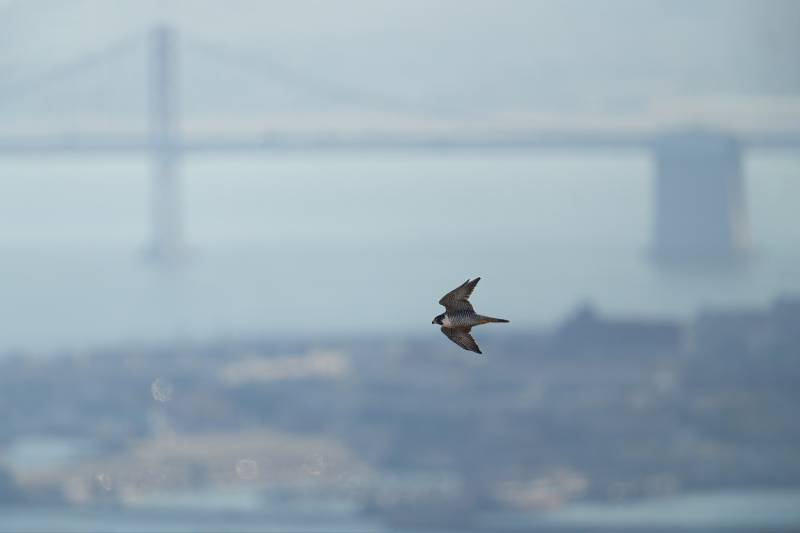However, an email to volunteers obtained by KQED says the Golden Gate National Parks Conservancy plans to relaunch its Hawkwatch program sometime between Oct. 7-14. However, a banding program that traps and tags birds won’t take place for at least the remainder of the season.
“We understand that this is disappointing news for many of our volunteers, and we hope the good news of the relaunch of Hawkwatch provides some certainty for the weeks ahead,” wrote Claire Mooney, a conservancy vice president.
Still, the organization has revealed very little about what led to the shutdown, which comes at a crucial time for those who study migratory birds.
Emails to the small team of Golden Gate Raptor Observatory staff members bounced back, saying they were on leave and no longer checking their accounts. Messages to numerous longtime volunteers with the organization went unanswered. After regular posting, the organization’s social media pages have not been active since early this month.
“The most critical thing that we’re worried about is that we’re losing that data point in a long-term dataset that has been uninterrupted for many, many years,” said Glenn Phillips, executive director of the Golden Gate Bird Alliance, which works in tandem with the observatory and has sent it volunteers — including some of its board members — in addition to providing training.
According to Phillips, observatory director Allen Fish was scheduled to speak with the Bird Alliance’s membership in November, but that talk has been postponed indefinitely.
Whatever internal issues might be going on at the Raptor Observatory, they must have been serious enough to merit shutting down at such a crucial time, Phillips said, noting that it comes in the middle of bird migration season, which stretches typically from early August through November.
“We hope they are resolving them quickly so that that group can get back to work because its work is so important,” he said. “In this day and age, with climate change and wildfires, there’s so much change happening in our environment that missing a year could actually cloud our understanding of what’s really happening in the world.”
The Golden Gate Raptor Observatory has been collecting data on local bird populations since 1984. It organizes both Hawkwatch, which uses teams of volunteers to identify and count birds of prey, and a banding program, which trains volunteers to help licensed professionals trap, tag and record data on birds, then release them.
The GGRO is award-winning and internationally recognized. Just this year, the organization won an “Excellence in Volunteerism” award from the National Park Service.
“This program provides invaluable support to the park’s wildlife biologists and the wider scientific community,” reads a press release announcing the award. “It showcases the innovative work of volunteers as community scientists to generate an impressive data set.”
That work is especially crucial during migration season, Phillips noted. The data it collects, especially from the banding program — which is paused for the rest of the season — helps scientists understand the overall health of birds that live here or pass through along their migration path, he said.
“It could be that birds aren’t breeding successfully. It could be that the young birds aren’t making it back to breeding territories a year later. Or it could be that adult birds are dying sooner than they should,” Phillips said. “And you can only know that if you are banding birds.”

